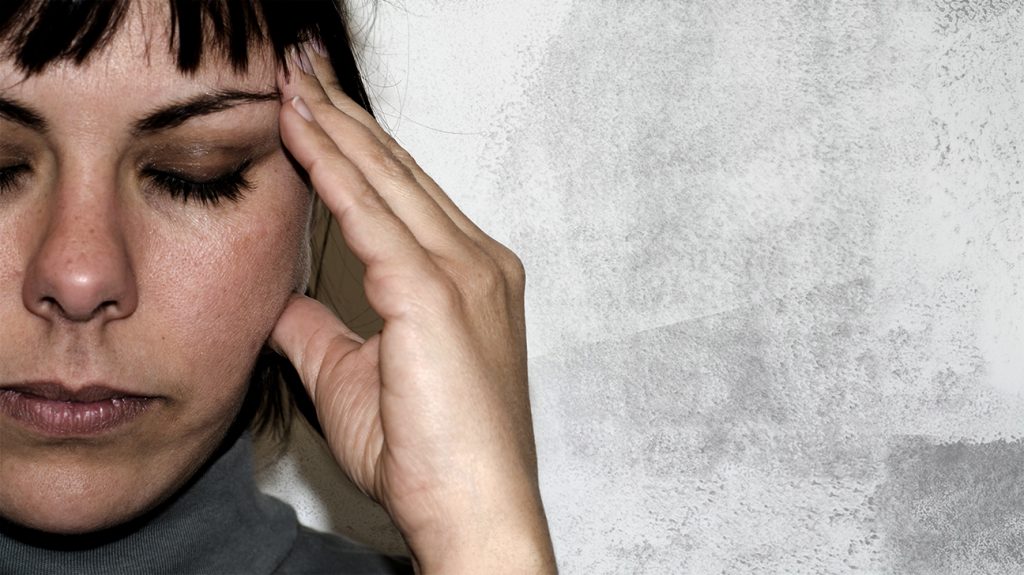There are various causes of a headache on the left side. Understanding the possible causes and their treatments may help a person manage the pain and know when to seek professional care.

Around 50% of adults worldwide have a headache disorder. Some headaches are minor and resolve with home treatment, but some are more severe and need medical care.
If a headache occurs with blurred vision, nausea, or any other symptom that causes concern, seek medical attention. If a person has a sudden, severe headache and weakness on one side of the body or confusion, they need emergency care.
This article explores the symptoms, causes, and treatments for headaches on the left side. It also provides more information about when to see a doctor.
Types overview
Several kinds of headaches can cause pain on the left side, including migraine and cluster headaches. We describe these in detail below.
Generally, doctors classify headaches as “primary” or “secondary.” For a person with a primary headache, the pain is the main symptom. A secondary headache results from another health issue, such as:
- a brain tumor
- a stroke
- an infection
The headaches that result can occur in any location, including the left side.
There are many types and causes of headaches. Learn about 11 of them here.
Migraine headaches
Migraine can cause a moderate to severe headache on the left side. The condition affects 12%Trusted Source of people in the United States, including 17% of women and 6% of men.
A migraine headache may throb and be worse on one side. The pain may begin around the eye or temple, then spread across the head.
Some other symptoms of migraine include:
- changes to vision
- nausea and vomiting
- dizziness
- extreme sensitivity to sound, light, touch, or smell
- numbness or a tingling sensation in the face or extremities
One rare type of migraine, called a hemiplegic migraine, can also cause weakness in the limbs and face on one side of the body.
A migraine episode typically lasts 4–72 hoursTrusted Source. A person may need to lie down in a darkened room and rest until the symptoms pass.
Experts do not understand the exact causes, but genetic factors and environmental triggers appear to play a role.
Common triggers include:
- stress, a factor in 80%Trusted Source of cases
- hormonal changes, present in 65% of cases
- certain foods, such as alcohol, cheese, and chocolate
- sleeping too much or too little
- bright lights or lights that flicker
- odors, such as perfumes
Is there a link between migraine and COVID-19?
Cluster headaches
A cluster headache can cause severe pain on one side of the head, often around the eye. The pain can be very severe, and it may feel sharp, burning, or piercing.
About 1% of people in the United States experience cluster headaches. When they occur, the headaches tend to arise in several episodes for 4–12 weeks, then stop, possibly for several years. They often affect the same side each time.
Common features include:
- pain behind one eye, one temple, or one side of the forehead
- pain that starts at night, usually 1–2 hours after going to sleep
- pain that peaks after 5–10 minutes
- severe pain that lasts 30–60 minutes
- less intense pain that may continue for up to 3 hours
Related symptoms may include:
- a blocked or runny nose
- a drooping eyelid
- watering and redness in one eye
- a flushed or sweaty face
The exact cause is unknown, but expertsTrusted Source believe that it involves a part of the brain called the hypothalamus and the nerves and blood vessels of the trigeminal system, which affects the eyes and face.
Cluster headaches often happen at the same time each day. They may also be more common in the spring or fall, and people may confuse them with allergy headaches. They usually affect people aged 20–50 years and 80% of them are males.
Learn more about cluster headaches.
Cervicogenic headaches
This type of headache can result from an injury to the neck, such as whiplash, or arthritis or other changes in the vertebrae at the top of the spine.
It can cause:
- moderate to severe pain that starts in the neck and spreads to the eyes and face on one side
- a stiff neck and reduced range of motion
- pain around the eyes, neck, shoulders, and arms
- nausea
- blurred vision
- sensitivity to light and sound
Steroid injections and nonsteroidal anti-inflammatory drugs, such as ibuprofen (Advil), may help manage the pain. With treatment, cervicogenic headaches should resolve within 3 monthsTrusted Source, though they may recur.
The pain and other symptoms may be cyclical and flare up periodically, though the frequency varies from person to person.
Continue Reading: https://www.medicalnewstoday.com/articles/319406#_noHeaderPrefixedContent






